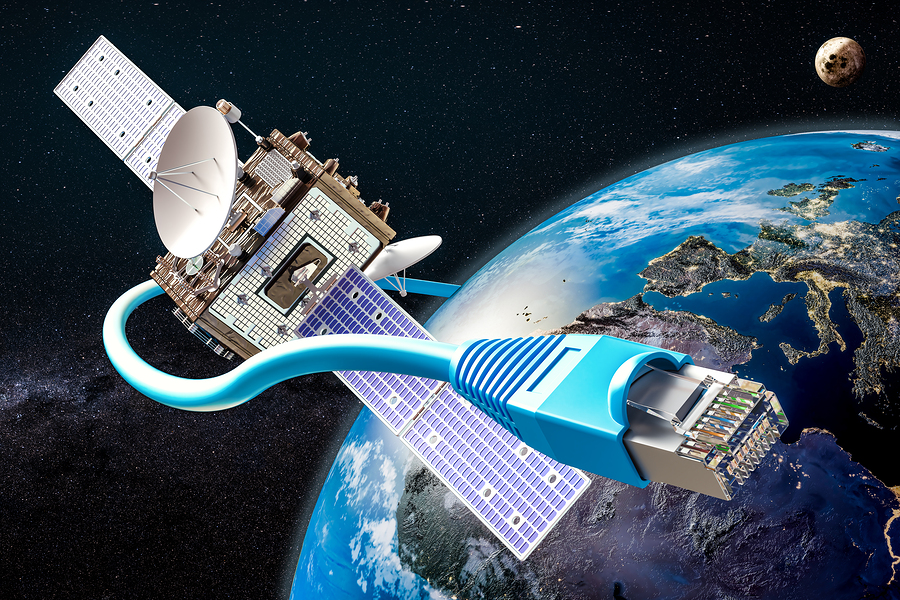By philanthropy for some or greed for others, providing access to the internet for the whole planet has become the new goal for the world’s greats. From Musk to Wyler and Pichai to Zuckerberg, ideas abound to increase the number of earthlings connected as well as to increase the bandwidth.
High versus low altitude
At the current time, 57% of the world’s population does not yet have access to the internet. Extending the net to the 4.2 billion unconnected people requires time and money for digging ditches, laying fibre and managing property rights. So, could the solution be in the sky? This is what Eutelsat believed in 2003 with geostationary satellites orbiting at an altitude of 35,786 km, but it did not count on a latency problem (500 ms) which is surmountable for downloads and navigation but is tricky for synchronous applications such as online games, sharing documents in the cloud, IP telephony and video chat. The solution would be low altitude satellites. This is how Greg Wyler (OneWeb) succeeded in reducing latency to 125 ms with his 12 satellites at an altitude of 8000 km. But why so many satellites? It’s because at this altitude they are no longer geostationary but very much in constant movement, so the quality of the flow will depend on the number of satellites, each taking over from the other to cover a specific land area. So it’s not surprising that Musk will launch no less than 4,425 satellites at an altitude of 1,150 km before creating a second constellation of 7,518 satellites to achieve a latency of 40 ms.
Choices, challenges, competitors
Undertaking such projects requires resolving complex issues, the first concerning the connection to low-altitude satellites. While Musk has opted for directional parabolic antennas – a complex device but with quality reception (ideal for his clients who are telecom companies) – Greg Wyler has chosen multidirectional antennas that suit individual consumers. The second point seams to be also settled for the two main protagonists, being how to put the satellites into orbit. Wyler has made an agreement with Arianespace and Virgin Galactic, while Musk will rely, quite logically, on his SpaceX company. As for the investment costs, the figures are high enough to give you vertigo. With plans to generate revenue of $30 billion by 2025 with 40 million subscribers, Musk – supported by Fidelity Investments and Google – is expected to meet his budget of $10 billion for the first constellation. Finally, this competition is attracting other multimillionaires, and not least: Alphabet, Google’s parent company, which has launched Loon – a project of stratospheric balloons to provide internet access to the most remote regions of the world – and Facebook, which also seems to be interested in this cause, as confirmed by a job offer for an “Extraterrestrial Product Manager”.
Whoever wins this new celestial duel, the real winner will be the earthlings who will benefit from a more extended network with improved bandwidth. As for the loser, it may not be the one we believe, but there is more room for someone to recover, after only seven years (the life span of small satellites), millions of pieces of space debris. Let us hope that one day a solution to this safety and environmental problem is found.
